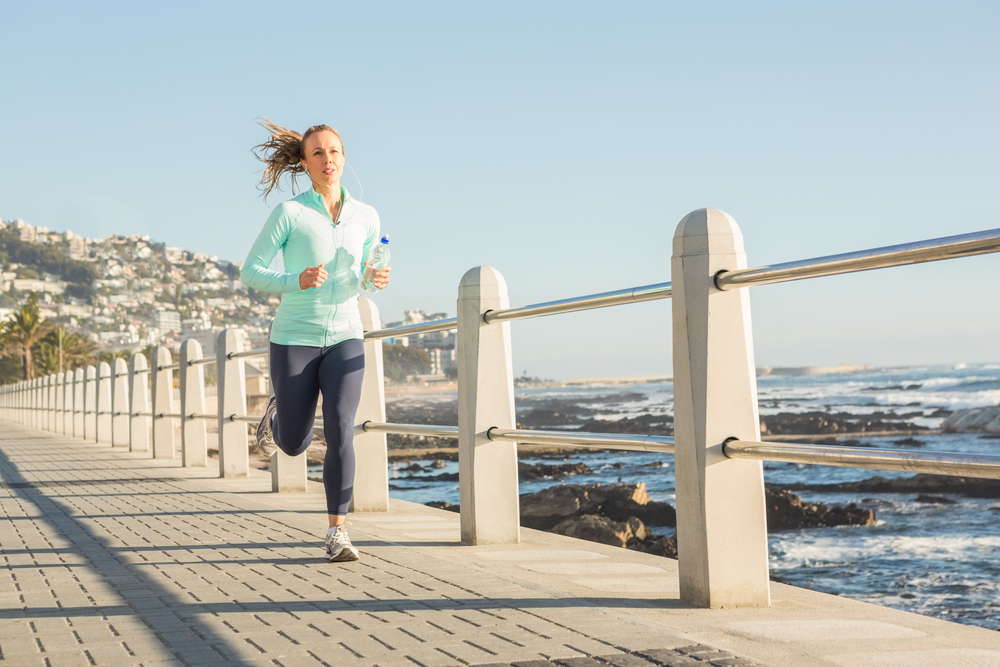While building muscle for speed and endurance is important, so is taking care of the fascia. Muscles in body are connected by fascia, which surrounds tissue, nerves, organs and all other structures in body. Fascia can become unhealthy by overuse, injury, or every day repetitive movement—such as running. Foam rolling can help keep fascia healthy by breaking up tight spots and hydrating the tissue. The healthier the fascia, the better you move. Foam rolling can help diminish aches and pains, increase flexibility, increase range of motion, enhance performance, and accelerate recovery.
When foam rolling, there are three types of movements to focus on: rolling, spans and stretching. Start out by rolling back and forth along the foam roller a few inches at a time. When you hit a tender area, hold pressure for several seconds to relax, and then span. Spanning is moving side to side on that spot until you feel the pain dissipate. Another way to increase circulation and mobility around a tender spot is to compress a trigger point while stretching the muscle to the full range of motion.
Massage balls can also be a runner’s best friend. Made of high density foam, TriggerPoint foam massage balls come in a variety of sizes to target tight spots prior to a run. This can help reduce stiffness, increase blood flow, improve your range of motion, and overall help you move more comfortably and efficiently. Runners can use a massage ball to more directly target specific areas, versus rolling over large muscle groups as with a foam roller.
{{cta(‘eff694b4-90a1-4763-9f91-b1a5eb9c227e’,’justifycenter’)}}
Massage balls such as the TriggerPoint MB5 and can target tight spots for runners such as hips, glutes, and calves:
Calves:
The foot is the foundation for most of your daily movement, and is controlled by the lower leg and calf. Releasing your lower leg muscles will help mobilize the ankle for better foot movement.
- Set Up: Position MB5 Massage Ball at the base of your calf, where it meets your ankle.
- Step 1: Press down and slowly roll back and forth along the muscle.
- Step 2: Pin the MB5 into the ground with your calf, and stretch your ankle in circles.
- Step 3: Slightly bend working leg at the knee, allowing MB5 to roll back, and keeping foot completely relaxed

Hips & Glutes:
Hips and glutes have a major influence on how the rest of the body works. Keeping these areas mobile improves torso rotation and leg activation. When these areas are tight, it can lead to knee pain and lower back pain.
- Set Up: Position the MB5 under your glute muscle, with one leg straight and the other knee bent.
- Step 1: Pull the straight leg in towards the chest slowly 4 times, remembering to breathe slowly while performing the movement.
- Step 2: Bend the leg on the MB5 up and out toward the side. Slowly lower and raise your knee toward the ground at a 45 degree angle.

TFL:
The TFL serves to help flex and internally rotate the hip. Over time, an overactive TFL will increase stress to the hip joint, IT band and essentially the knee.
- Set Up: Find the TFL by placing one hand on the outside of the hip and slightly turning the knee cap inward. The TFL will “push” into your hand.
- Step 1: Roll forward and back 4 times slowly, remembering to breathe as you roll.
- Step 2: Pin the MB5 in place while bending your grounded knee back towards your glutes and then back to starting position. Do this 2 times, and repeat as needed.

Adductor:
The adductors work to help the glute muscles control the leg and stabilize the hips.
- Set Up: Lie down on a smooth surface placing the MB5 underneath the hip towards the front of the pelvis. Bend the leg at the hip and knee.
- Step 1: Roll leg forward and back slowly four times.
- Step 2: Pin the leg in place and extend your top knee forward and back 2 times and repeat as needed.

It is not uncommon for people new to foam rolling to notice some initial discomfort. This is normal and due to the initial compression of the sensory receptors. Remember, foam rolling is not causing the pain, it releases the pain. As with any physical activity, it becomes easier with practice.
Credit: Trigger Point
ENROL IN ONE OF OUR TRIGGER POINT THERAPY COURSES TODAY
Grow your personal trainer repertoire with our trigger point therapy. Offer your clients a more complete training experience by not only offering great workouts, but also incorporated trigger point therapy sessions to increase mobility and wellbeing.
UPCOMING COURSE DATES: CLICK HERE or contact us today on 1 300 556 540 to get in touch with one of our helpful consultants.
{{cta(‘663247fb-d685-422a-95ee-3e0c5e22b073′,’justifycenter’)}}
